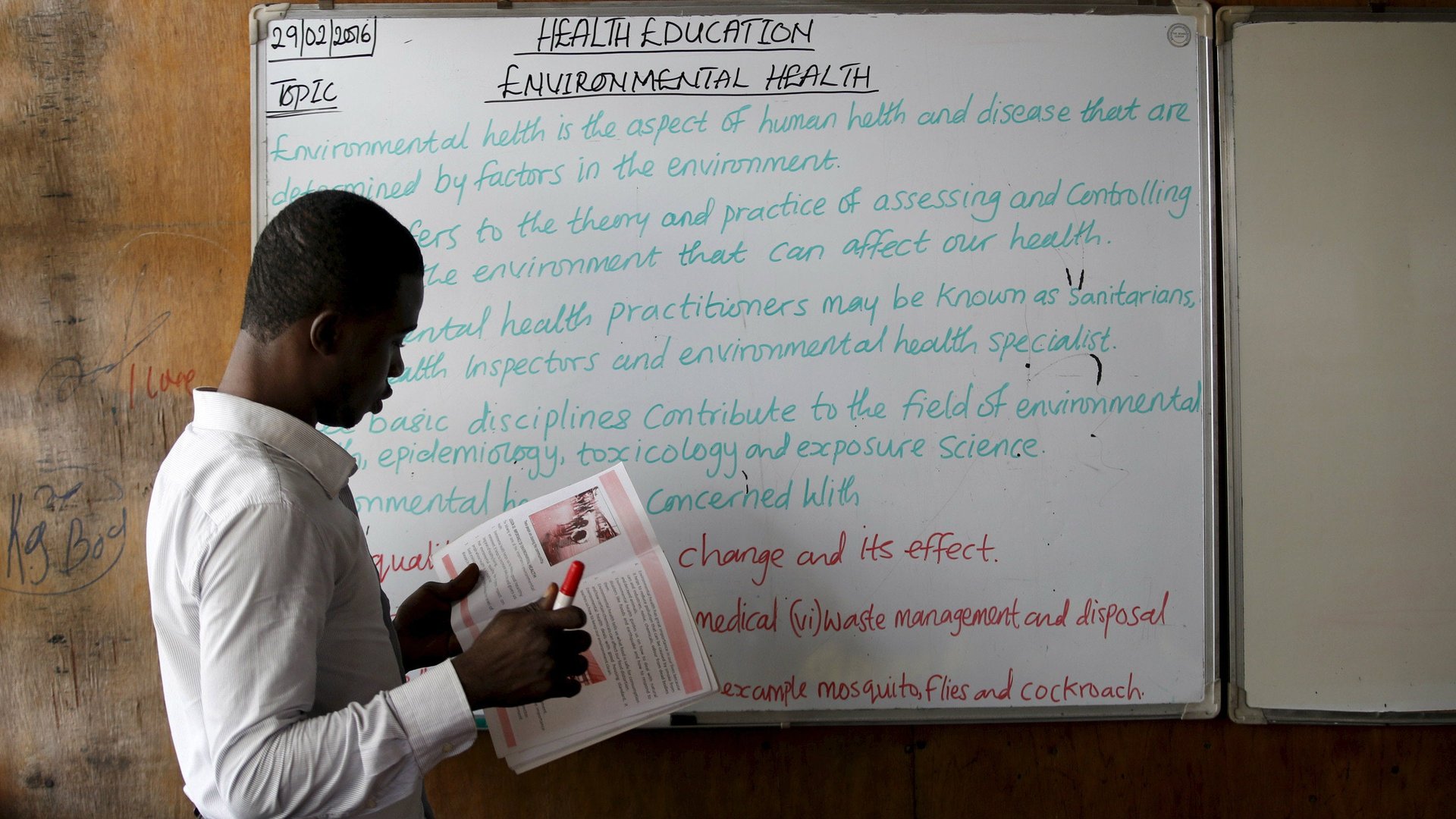African countries are facing the world’s worst teacher shortage
African countries face a particularly difficult path to educate their fast-growing millions of children because of a chronic teacher shortage across the continent, says a new report.


African countries face a particularly difficult path to educate their fast-growing millions of children because of a chronic teacher shortage across the continent, says a new report.
As part of its commemoration of World Teacher Day (Oct. 5), UNESCO Institute of Statistics (UIS) has released its first ever estimates of teacher shortages across the world. The estimates paint a particularly grim picture for Africa as the continent has the world’s greatest teacher shortage.
To shore up the deficit and achieve universal primary and secondary education by 2030—one of the UN’s Sustainable Development Goals (SDG)—19.6 million primary and secondary school teachers need to be hired in Africa. The shortages are more severe in Sub-Saharan Africa—which accounts for 17 million of the total number of teachers required—than anywhere else.
The problem of teacher shortages is compounded by a crucial statistic: Africa has the fastest-growing school-age population globally. “For every 100 children of primary age and every 100 of secondary age in 2014, there will be 138 and 148 respectively in 2030,” UIS says. Paradoxically, despite high unemployment rates in many countries, teaching positions remain unfancied. This is down to low and irregular salaries paid to teachers in public school systems as evidenced by their frequent strike actions.
The teacher numbers problem also results in overcrowded classrooms across the continent. UIS estimates show that in 15 African countries, primary school classrooms are overcrowded with each trained teacher typically having more than 40 pupils.
While teacher shortages is one thing, the quality of existing teachers is another. In 31 of 96 countries analyzed, UIS data shows the number of primary school teachers trained according to national standards was “less than 80%” in 2014. Crucially, more than half of those countries (17) are in sub-Saharan Africa.